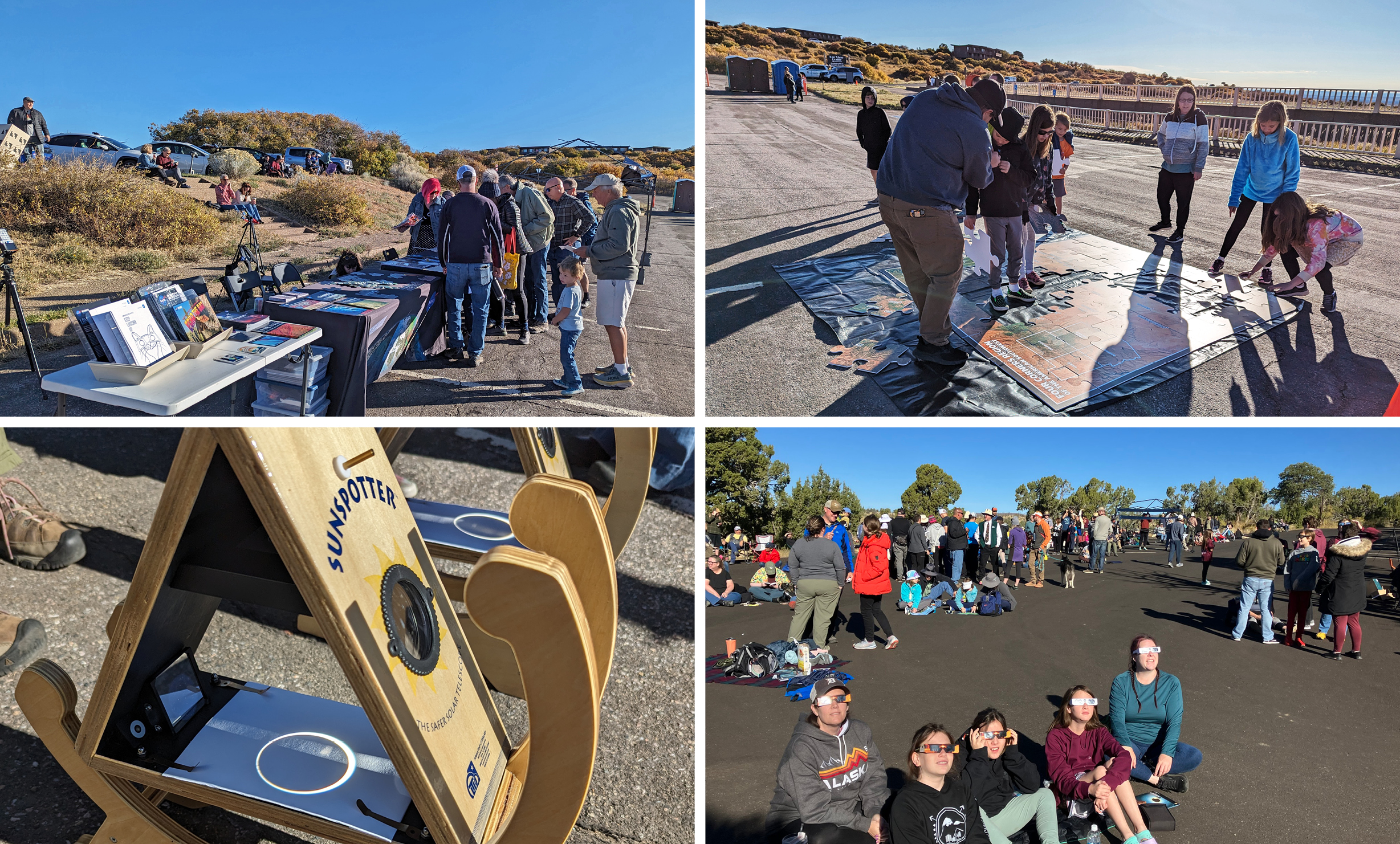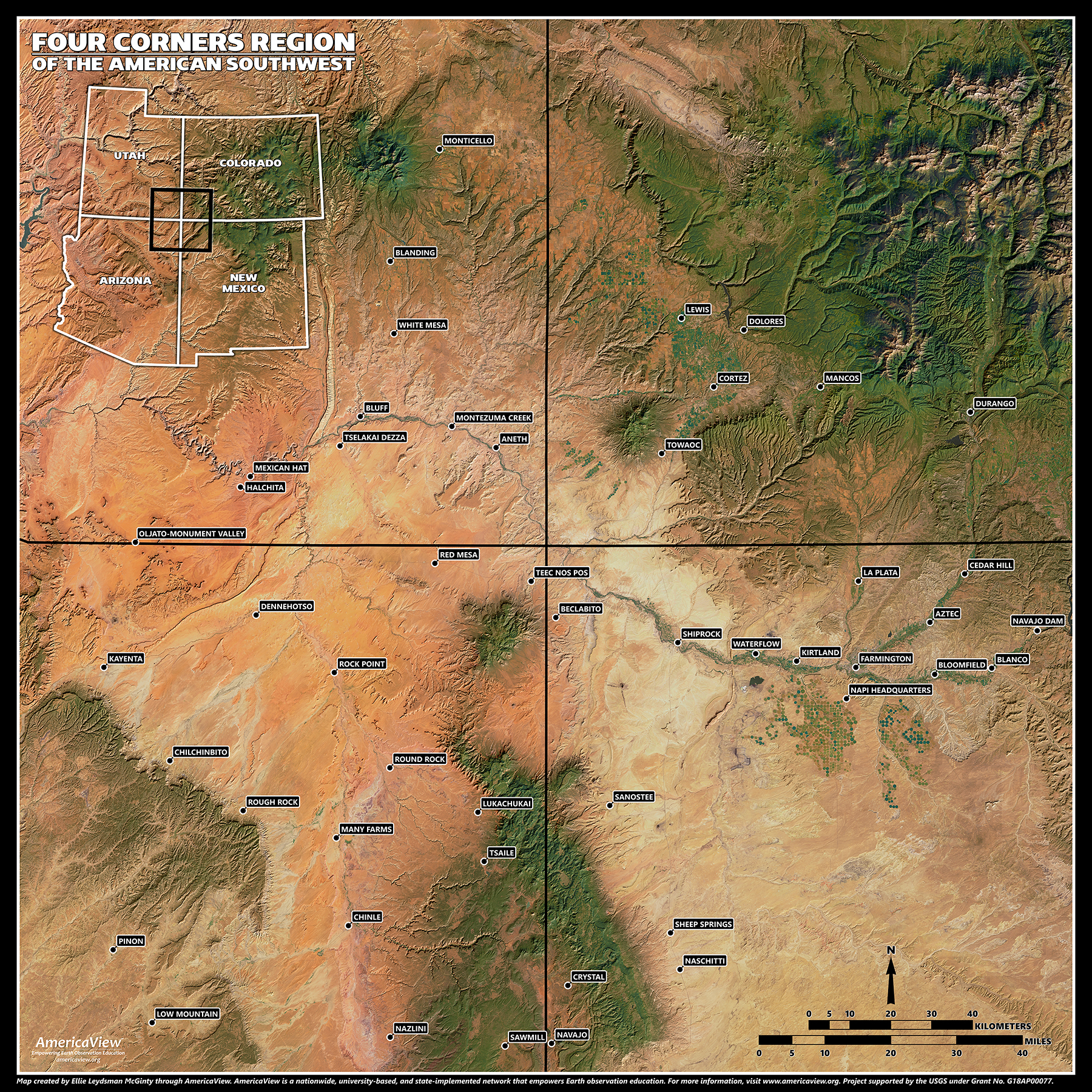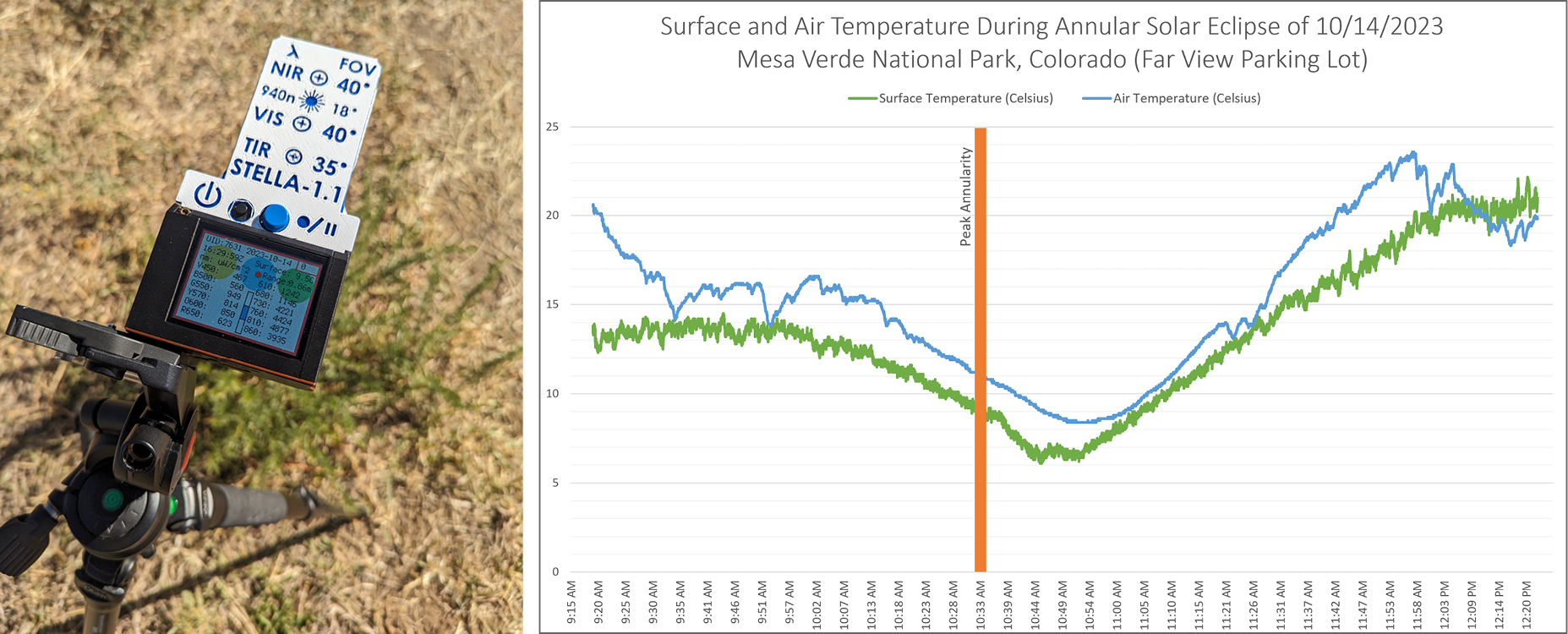By Ellie Leydsman McGinty
On Saturday, October 14, 2023, regions of North, Central, and South America experienced an annular solar eclipse. Annular solar eclipses, also known as “ring of fire” eclipses, occur when the Moon passes between the Sun and Earth while it is at its farthest point from Earth. In this celestial alignment, the Moon obscures all but the outer edges of the Sun, revealing a striking and brilliant ring of sunlight called an annulus.
While a crescent-shaped partial solar eclipse was visible to most residents of the Western Hemisphere, the “ring of fire” could only be witnessed by viewers located within the narrow path of annularity. The path of annularity stretched from the Oregon Coast to southern Texas, before crossing over the Gulf of Mexico, Central America, Columbia, and Brazil. In the United States, the annular solar eclipse passed over an astonishing 29 national park units, many of which are located in the American Southwest. These protected areas drew large audiences and offered some of the most splendid locations to experience the astronomical show.

Several national parks within the path of annularity hosted special events to celebrate the natural phenomenon. Mesa Verde National Park, located in southwestern Colorado within the Four Corners region, was one of these places. Mesa Verde National Park was established in 1906 to protect the rich cultural heritage of 26 Pueblos and Tribes. Occupying over 52,000 acres (21,000 hectares) of high tablelands, the park safeguards nearly 5,000 archeological sites, including 600 cliff dwellings. It was designated as one of the 12 original World Heritage Sites in 1978 in recognition of the remarkable and well-preserved Ancestral Puebloan settlements and agricultural features. As a cultural and scenic treasure, Mesa Verde National Park served as a spectacular venue to observe the eclipse and participate in space and Earth science.

Through the Earth to Sky Partnership, NASA coordinated with Mesa Verde National Park to host a series of outreach events. The Earth to Sky Partnership, a growing interagency collaboration between NASA, the National Park Service (NPS), and the U.S. Fish and Wildlife Service (USFSW), fosters connections between scientists, communicators, and informal educators to develop interpretive and educational programs. Through this collaborative effort, the annular solar eclipse outreach events at Mesa Verde National Park brought together scientists, park rangers, educators, and outreach specialists to provide a unique opportunity to engage with park visitors.
During a two-day event, NPS and NASA staff set up science stations throughout the park for hundreds of travelers and spectators. Interactive tables and viewing areas were available at the Chapin Mesa Museum, the Far View Parking Lot, and the Morefield Campground Amphitheater. Representatives from the Earth to Sky Partnership, the Astronomical Society of the Pacific, the Lunar Reconnaissance Orbiter (LRO) Mission, the PUNCH Mission, and the Landsat Program were present to discuss science topics, answer eclipse questions, distribute solar viewing glasses, and offer hands-on activities.
On Saturday morning, at 9:11 a.m., when the Moon gradually began to pass between the Sun and the Earth, crowds of observers gathered at the viewing locations and science stations in the park. As the eclipse progressed through its partial phases, park visitors engaged in various activities. Solar viewing tents, pinhole projector postcards, and Sunspotter solar telescopes provided safe methods to watch the magnificent display in the sky.

A LightSound device, developed by Harvard University, allowed blind and visually impaired individuals to experience the eclipse through a technique called sonification, a process that converts light to sound. A tabletop jigsaw puzzle of the NASA eclipse map and a large Landsat floor puzzle of the Four Corners region (loaned by AmericaView) occupied children and adults alike. A STELLA handheld instrument, while collecting data, revealed the temperature drops associated with the masking of the Sun and the decrease in solar radiation.
At 10:31 a.m., onlookers cheered as the thin orange crescent transformed into the “ring of fire.” The vivid halo of sunlight was visible for just over three and a half minutes at Mesa Verde National Park, with peak annularity taking place at 10:33 a.m. The annular solar eclipse completed its pass over the park at 12:04 p.m. and left visitors inspired and motivated to learn more about NASA science.


The daytime events were followed up with evening programs at the Morefield Campground Amphitheater. Indigenous park ranger interns, Jordan Fragua (Picuris Pueblo) and Davin Nez (Navajo Nation), shared revered ancestral stories about cosmology and astronomy. Interpretive park ranger and archaeologist, Jackie Rabb, discussed the certification of Mesa Verde National Park as the world’s 100th International Dark Sky Park, in recognition of its exceptional starry night skies. NASA staff and affiliates, including Cris White, Nicholas Estes, Jason Trump, and Timothy Livengood, gave presentations about heliophysics, lunar imaging, and the cultural significance of solar eclipses in Indigenous cultures and settlements. Nighttime activities were concluded with stargazing parties that provided opportunities to view the wonders of the universe.







